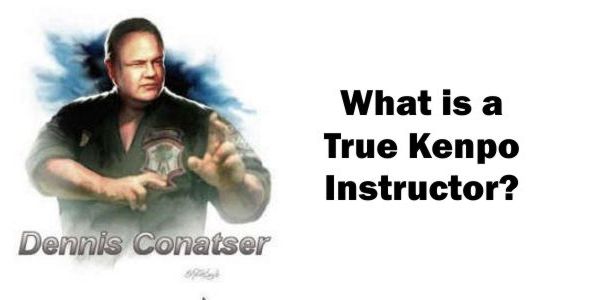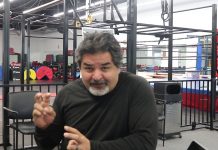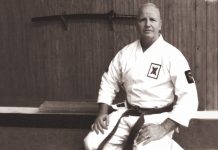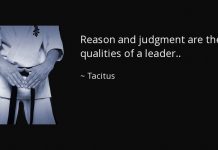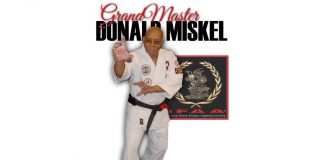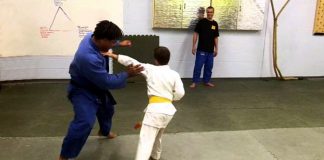The passing on or “teaching” of our Art (American Kenpo) as a system is an integral part of all of our studios. Even so, when we appoint someone to teach, we often do so without considering their ability to convey philosophy, basics, self defense techniques, forms and sets, history, sparring, training drills, principles, etc. is often misunderstood or overlooked. Wearing a different colored belt, uniform, or even wearing a patch that distinguishes you as a special person doesn’t exactly mean that you are qualified to pass on the System of Kenpo!
While we all believe that it is an important essential for each of our students to become a true “Kenpo Instructor,” and to this end we have them as our students as a vehicle for us to teach and so they can learn how to teach as well. To become a true “Kenpo Instructor” is essential. Many studios have students help teach (or should I say show) other students, without proper instruction or at least without an organized plan or without understanding of the the “what, where, when, how, why, etc.” of the material, rules, or philosophy being taught. In most cases the students only “Instructor Training” is to recall what they had have been taught (mirroring and modeling) and to try and to duplicate experiences from memory their experiences as they remember. While mirroring and modeling your Instructor is normally a good thing, it is based on an assumption. We must assume that the “Instructor” we are using as an icon, knows what he/she is doing and why. Just because he/she taught us one way, does not mean that that is the best method to teach others, to do exactly the same thing in the same way we were shown (tailoring). I am not referring to the standardization of material, but to the manner in which it is taught, how and why. To be considered a true “Instructor”, one needs acutely developed skills in several facets of Kenpo. Until you achieve them, you are not an instructor; you are an instructor trainee.
The Teacher
First, the “Trainee” must be able to TEACH the material at hand. A teacher is one who teaches introduces NEW (key word, synonymous with teach/new) material to the student which that has not been covered or explained before. Knowing the correct amount to introduce (so as to not starve or overwhelm the student) of material taught is equally as important as to the manner in which it is presented. To Quote Ed Parker, “What is truth for one may not be truth for another”. The material must be taught to the student at his or her level of competence in the Art and the teacher must be able to comprehend and communicate the general idea as to what we are trying to accomplish with the underling material. To be successful at this, the “Trainee” needs constant guidance and help from an instructor who understands exactly how to teach the System of Kenpo. The trainee needs to know how much to teach and why, in what quantities, and also, why we are instructing this particular information in this particular way, at this particular time. Clearly, the trainee must know the gross movements of Delayed Sword, but must know a lot more besides.
The Coach
Second, the “Trainee” must be able to coach. This means on must maintain the integrity, enhance, refine, explain, and tailor the material that has already been taught previously. Obviously, the “coach” follows the teacher in sequence, (key word, synonymous with maintain integrity/ refine/ explain/ tailor) continually enhances and brings continued value to the material which has previously been presented to the student. Improvement on the student’s form, angles, and principles. , and all technical training points is must be continually “coached” and watched for correctness and improvement. If the left-hand rib check disappears during the first move of Delayed Sword, the coach needs to emphasize to the student with its function and importance. There are numerous ways of doing this; the coach needs to know them. Once the student recovers from the coaching tip, the coach goes back to observing and commenting.
The Trainer
Third, the “Trainee” must be able to train, drill or and ingrain the material that has already been taught, coached or explained previously. The “trainer” (key word, synonymous with repeat, drill, or go over several times) repetitiously drills the material which has previously been presented or taught to the student. Improvement as a “trainer” depends on repeating or drilling them on the material over and over, so as to ingrain or etch the material permanently in the student’s muscle memory. The importance of this should not be underestimated, extemporaneous response in the street is a result of, and usually cannot be any better than, the conditioning the student has received into the movements. To Quote Mr. Parker, “conditioning and guts (courage) take over where knowledge and skill end”. It is a truism that you react in the street as you react in the studio, and that is precisely why the studio must inculcate good reactions. As for repetition, the trainer needs to keep in mind that “Practice makes Permanent, ” not Perfect. It profits the student not at all to repeat Delayed Sword meaninglessly or incorrectly, without timing or an appreciation of the angles and the use of weight. If this is done, the “benefit” of the practice becomes merely a disadvantage that subsequent drilling must eradicate. And it takes longer to un-train than it does to train. — Improvement is the result of repeated Practice (practice with coaching and constant adjustments). Thus, a trainer needs a clever eye in conjunction with the other skills to achieve optimal results.
The “Innovator”
The last step to complete the process of becoming a “True Kenpo Instructor” is that the “Trainee” must be able to create or innovate. As Ed Mr. Parker once said, “The man who knows how will always be a student … but the man who knows why will continue to be the instructor”. We have been given an excellent Base System to work with, but we have to remember, realize that Mr. Parker was a constant innovator, he always looked to improve the System of American Kenpo whenever he could. (Remember all the alterations or improvements and adjustments over the past 5 five decades). I have always said, “Progress is possible, provided that Knowledge is transferred, assuming that Motivation is present and Innovation takes place.”
As with the other areas I have discussed, students have varying abilities to innovate to use a solid understanding of numerous details to achieve a new solution. Opportunities for developing inherent skill at this occur much less frequently than opportunities to teach or to coach or to drill, but a trainee who spends enough time working with students will sooner or later be forced to innovate or fail. The key is to provide the trainee with enough experience, this increases the probability that a situation requiring innovation will arise.
The True Kenpo Instructor
One must understand the study of Kenpo is a continual process. While it is sometimes possible to bring trainees along sequentially, having them teaching, coaching, or training. Putting them in situations that force them to innovate is more difficult, but it can be done. Monitor your trainees for progress in the art of teaching as well as adherence to the facts of Kenpo. Often, new ideas will surely come up at which case situations will come up to make the “Trainees” become, for a moment, an innovator, extending their a skills as Teacher, Coach, Trainer or Innovator. These moments are crucial to trainees development, and you have to make sure that the lesson is not lost, that they do not simply revert back to that which he/she was doing previously before without understanding the new level they have momentarily glimpsed. This is difficult to do, and almost impossible to do systematically or on a schedule. It requires careful observation, followed by explanation and support. But it can be done and it has to be if we are to create true Instructors to succeed us and to continue developing, not just merely teaching, the Art of Kenpo.
When the “trainee” has sufficiently developed these four areas of importance, he or she can be considered well on their way to becoming a true instructor. All of us need to take Self-Inventory constantly and see where we can improve ourselves in Kenpo.
To quote Mr. Parker: “Time will either promote you or expose you.”

